-
 In the Studio: Washes and PatinasOne of the characteristics of terra sigillata is the uniform opaque color created when it’s applied in multiple layers. As a result, this uniform color can flatten the volume of a given form or, conve
In the Studio: Washes and PatinasOne of the characteristics of terra sigillata is the uniform opaque color created when it’s applied in multiple layers. As a result, this uniform color can flatten the volume of a given form or, conve -
 Editor's Note: Table SettingsI’m not sure whether I like setting the table more in anticipation of the meal that’s about to come or for the act of assembling pieces from my ceramic collection as a whole.
Editor's Note: Table SettingsI’m not sure whether I like setting the table more in anticipation of the meal that’s about to come or for the act of assembling pieces from my ceramic collection as a whole. -
 Impressions, Imprints, and DippingIf an absorbent organic material such as cotton fiber or woven fabric is dipped into slip (liquid clay) and then fired in a kiln, the organics burn away, but what is left can still resemble the origin
Impressions, Imprints, and DippingIf an absorbent organic material such as cotton fiber or woven fabric is dipped into slip (liquid clay) and then fired in a kiln, the organics burn away, but what is left can still resemble the origin -
 In the Studio: The Harp ToolA few summers ago I was at a wood-fire residency at Watershed Center for the Ceramic Arts. While there, I came across a tool that I had never seen before. The unique design and many uses of this harp
In the Studio: The Harp ToolA few summers ago I was at a wood-fire residency at Watershed Center for the Ceramic Arts. While there, I came across a tool that I had never seen before. The unique design and many uses of this harp -
 In the Studio: Pricing WorkPricing is a subject that many potters find confusing, especially new sellers. It’s not supposed to be easy, and there’s no formula. Proper pricing can be figured out over time. This is my approach.
In the Studio: Pricing WorkPricing is a subject that many potters find confusing, especially new sellers. It’s not supposed to be easy, and there’s no formula. Proper pricing can be figured out over time. This is my approach. -
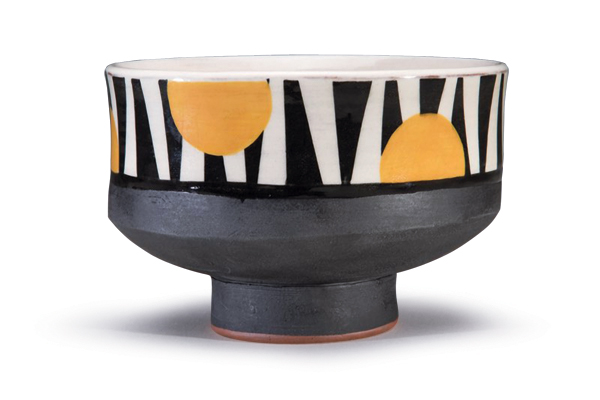 A Source of InspirationA finished, slab-constructed form has distinctive characteristics, the result of a methodical process that moves from concept and scale drawings to the designing of templates and finally the engineeri
A Source of InspirationA finished, slab-constructed form has distinctive characteristics, the result of a methodical process that moves from concept and scale drawings to the designing of templates and finally the engineeri -
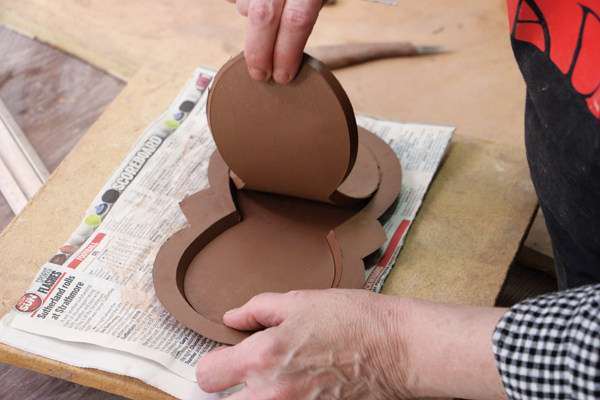 Delighting the EyeI gravitated toward handbuilding techniques during undergraduate school, discovering that they were the best choices for the forms I wanted to make. Inspiration for my pots comes from a variety of sou
Delighting the EyeI gravitated toward handbuilding techniques during undergraduate school, discovering that they were the best choices for the forms I wanted to make. Inspiration for my pots comes from a variety of sou -
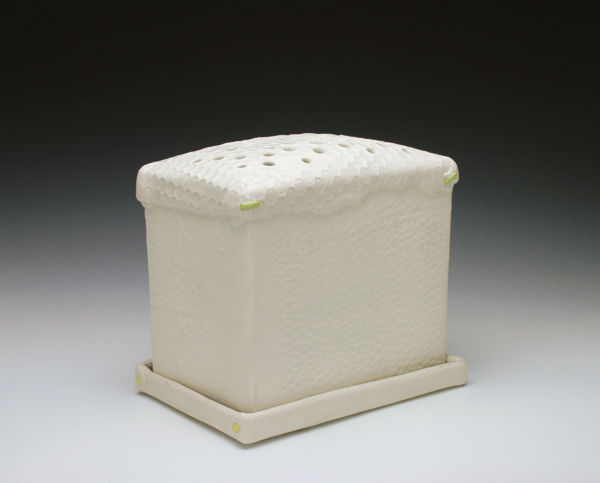 Handbuilt Flower BoxMy work is heavily influenced by the abundance of disposable items that I’m exposed to on a daily basis. I use textures and shapes transferred from disposable or single-use materials such as cardboard
Handbuilt Flower BoxMy work is heavily influenced by the abundance of disposable items that I’m exposed to on a daily basis. I use textures and shapes transferred from disposable or single-use materials such as cardboard -
 Stacked Place SettingsA stacked place setting is one of my favorite things to make and fire in wood or soda kilns. I enjoy throwing the plates, bowls, and cups that complete each set and I’m absolutely drawn to the varied
Stacked Place SettingsA stacked place setting is one of my favorite things to make and fire in wood or soda kilns. I enjoy throwing the plates, bowls, and cups that complete each set and I’m absolutely drawn to the varied -
 In the Potter's Kitchen: Two-Section Baking DishWhen you think of ovenware, you probably think of a casserole dish first. The lidded baking dish is a staple of both the kitchen and the potter’s art, and can be used for casseroles, meats, roasted ve
In the Potter's Kitchen: Two-Section Baking DishWhen you think of ovenware, you probably think of a casserole dish first. The lidded baking dish is a staple of both the kitchen and the potter’s art, and can be used for casseroles, meats, roasted ve -
 Decorative Glaze Removal ProcessesAlong with all of the variables of glaze application, there are many glaze removal processes that can add greatly to the richness and diversity of the ceramic surface. Some of these are used in conjun
Decorative Glaze Removal ProcessesAlong with all of the variables of glaze application, there are many glaze removal processes that can add greatly to the richness and diversity of the ceramic surface. Some of these are used in conjun -
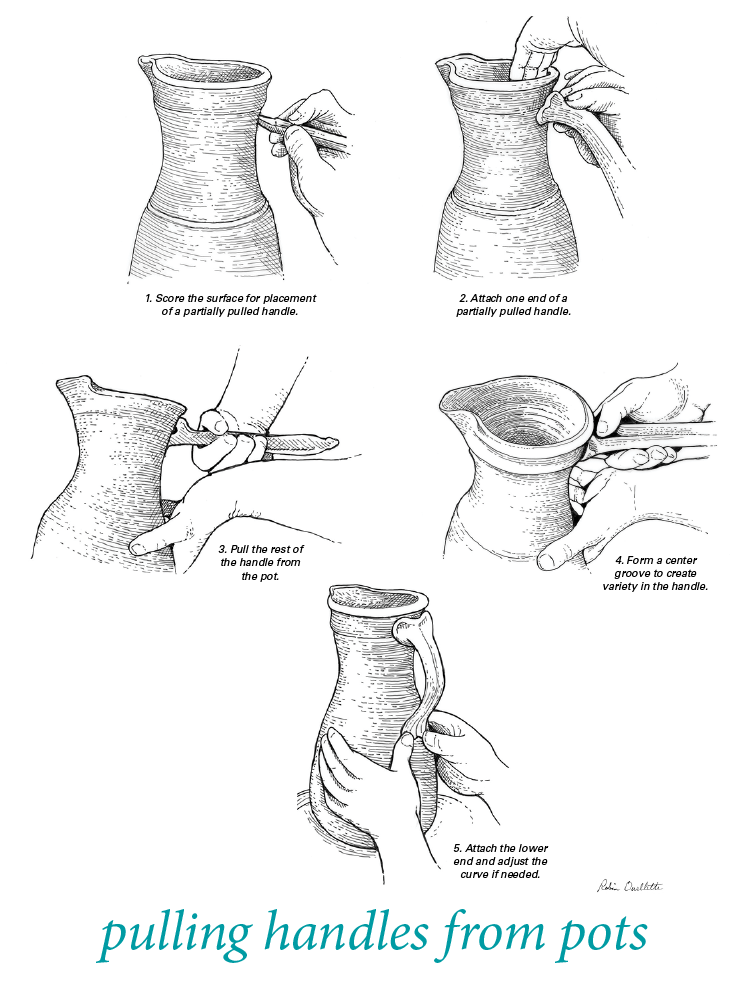 Pottery Illustrated: Pulling Handles From PotsPottery Illustrated pulling handles from pots. Drawn by Robin Ouellette.
Pottery Illustrated: Pulling Handles From PotsPottery Illustrated pulling handles from pots. Drawn by Robin Ouellette. -
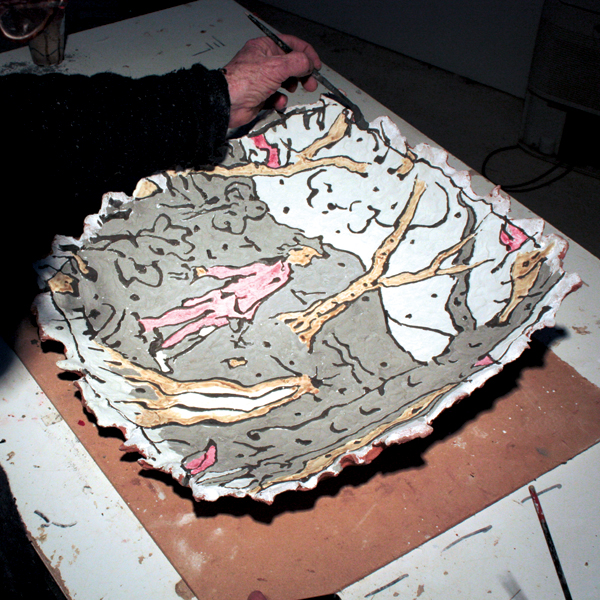 Tactile GeologyI’m trained as a geologist, but I’ve been working with ceramics full time for 35 years. As in geology, I like the nature of materials and how they transform through heat and pressure. I choose to use
Tactile GeologyI’m trained as a geologist, but I’ve been working with ceramics full time for 35 years. As in geology, I like the nature of materials and how they transform through heat and pressure. I choose to use -
 Recording Glaze DevelopmentIt’s amazing how many students and full-time clay workers go about making glazes with a lengthy and time-consuming process, only to forget to clearly write down just what they’ve done. It seems to be
Recording Glaze DevelopmentIt’s amazing how many students and full-time clay workers go about making glazes with a lengthy and time-consuming process, only to forget to clearly write down just what they’ve done. It seems to be -
 Effective Side FiringI’ve always loved ash glazes. For a long time, I fired in other people’s reduction kilns, often waiting months in between firings. When I finally got my own electric kiln, I was thrilled to start expe
Effective Side FiringI’ve always loved ash glazes. For a long time, I fired in other people’s reduction kilns, often waiting months in between firings. When I finally got my own electric kiln, I was thrilled to start expe -
 In the Potter's Kitchen: Covered Cupcake StandA covered cupcake stand is probably not a necessity; however, they’re very fun to make, especially if they’re frilly and over-the-top fancy. I like to imagine that mine are going to a tea party with t
In the Potter's Kitchen: Covered Cupcake StandA covered cupcake stand is probably not a necessity; however, they’re very fun to make, especially if they’re frilly and over-the-top fancy. I like to imagine that mine are going to a tea party with t -
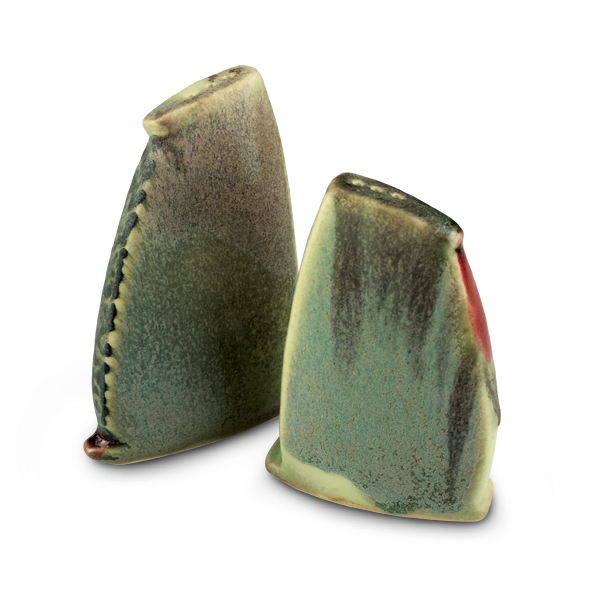 The Cat's MeowI’ll never forget coming home from an outing to find the butter dish left out on the table with the lid off! The crisp rectangle of butter had been licked into a soft, shallow mound by my cat. Memorie
The Cat's MeowI’ll never forget coming home from an outing to find the butter dish left out on the table with the lid off! The crisp rectangle of butter had been licked into a soft, shallow mound by my cat. Memorie -
 Why Use Coils?This process requires you to consider color first, rather than last, as there’s no glaze on the outside of the piece—all the tones come from the clay body. In my work, I’m interested in using two cont
Why Use Coils?This process requires you to consider color first, rather than last, as there’s no glaze on the outside of the piece—all the tones come from the clay body. In my work, I’m interested in using two cont -
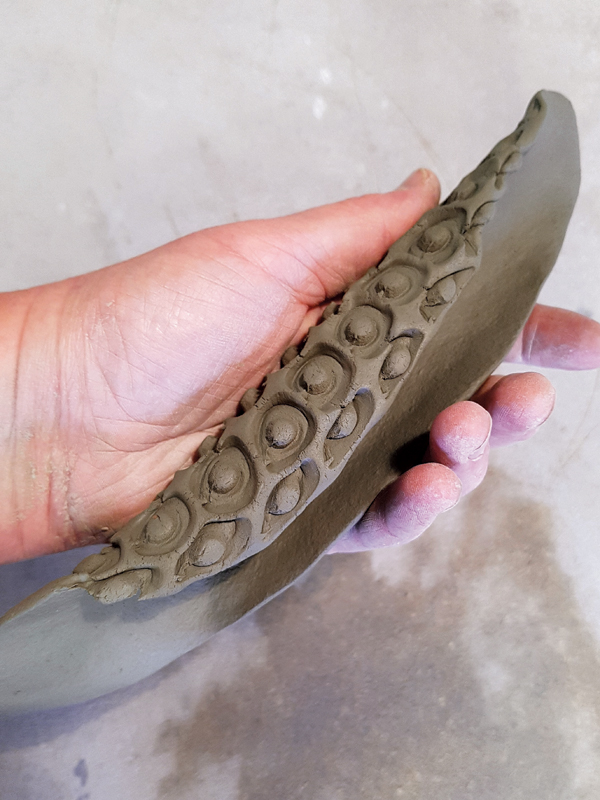 Too Much is Just Enough!My work is a lot about surface decoration. And a well-crafted canvas to put the pattern on is essential to my creativity. There is something extraordinary with the three dimensions of a pot; the insid
Too Much is Just Enough!My work is a lot about surface decoration. And a well-crafted canvas to put the pattern on is essential to my creativity. There is something extraordinary with the three dimensions of a pot; the insid -
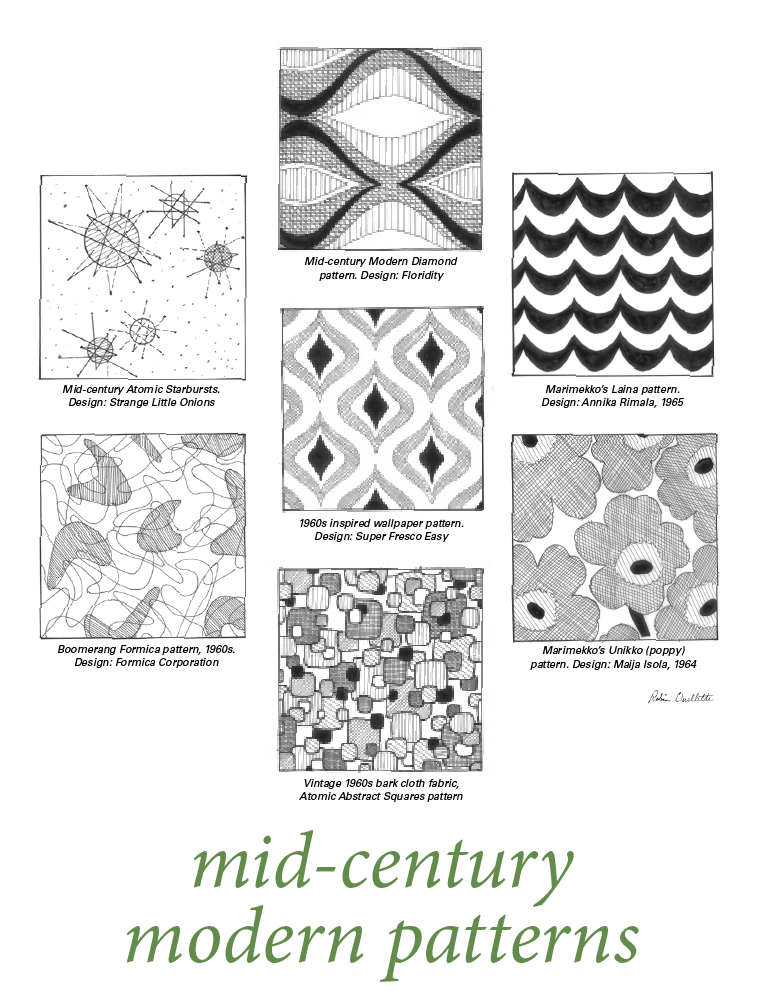 Pottery Illustrated: Mid-Century Modern PatternsPottery Illustrated drawn Mid-Century Modern Patterns. Drawn by Robin Ouellette.
Pottery Illustrated: Mid-Century Modern PatternsPottery Illustrated drawn Mid-Century Modern Patterns. Drawn by Robin Ouellette.
- «
- 31 (current)
- 32
- 33
- 34
- 35
- 36
- 37
- 38
- 39
- 40
- »
